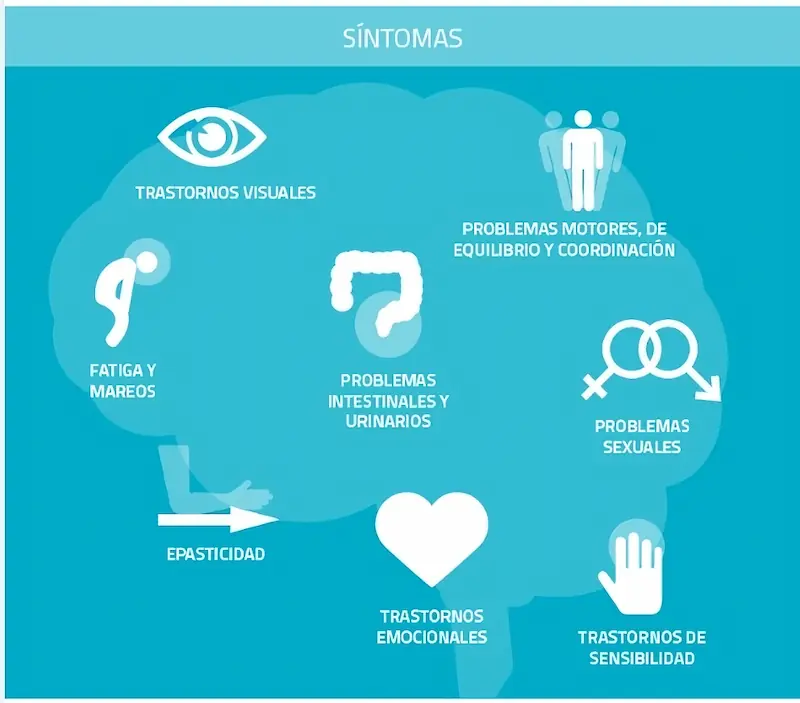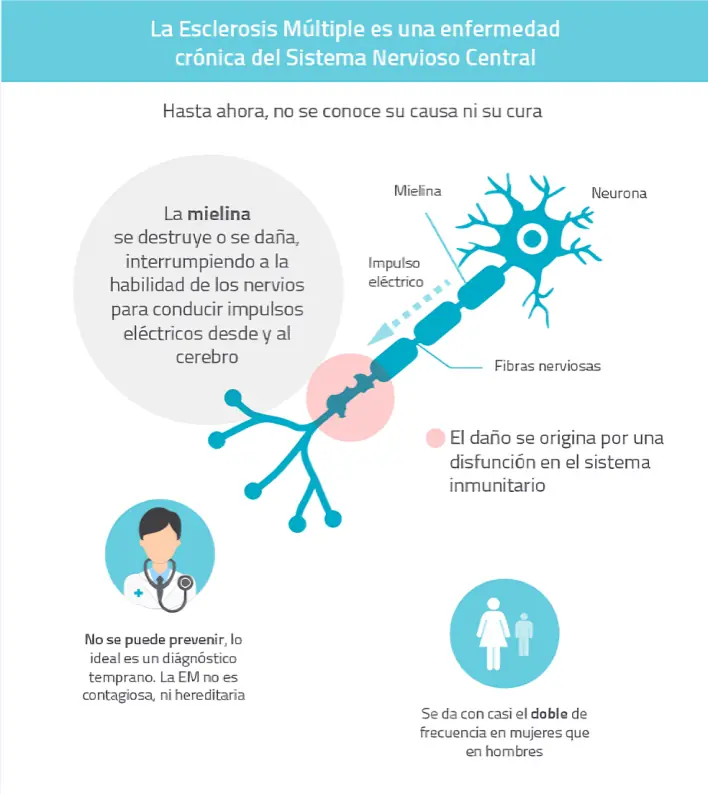In this article we explain what Multiple Sclerosis (MS) is, who it affects, how it is diagnosed and what its symptoms are.
Its cause is unknown, and there is no cure. Multiple Sclerosis (MS) is a chronic, neurodegenerative and autoimmune disease that affects the central nervous system (brain and spinal cord) of 2,500,000 people worldwide. On the occasion of World Multiple Sclerosis Day, which is celebrated on May 31, we give voice to this disease.
What is multiple sclerosis?
Multiple sclerosis is a disease of the central nervous system that affects the brain and spinal cord. The immune system attacks the myelin (the material that surrounds and protects nerve cells), which causes poor communication between neurons and leads to various MS symptoms that we will describe below.
Who does multiple sclerosis affect?
Multiple sclerosis is a disease of young adults since it is usually diagnosed between the ages of 20 and 40. It is the leading cause of acquired neurological disability and the second leading cause of disability in young people, after traffic accidents. It is also a disease that affects women more than men.
How is it diagnosed?
Multiple sclerosis is not contagious, nor hereditary, and cannot be prevented. Early diagnosis is ideal.
The diagnosis of multiple sclerosis is made through:
- Medical history.
- Neurological examination.
- Evoked potentials.
- Cerebrospinal fluid study results.
- Demyelinating lesions that can be identified through magnetic resonance imaging. Magnetic resonance imaging (MRI) is one of the main tests to diagnose multiple sclerosis. It is a non-invasive technique that captures very detailed images of the brain and spinal cord.
Thanks to magnetic resonance imaging, the lesions produced by the immune system’s attack on myelin can be seen in the brain. It should also be noted that this test cannot be considered conclusive because not all lesions can be detected by the scanner and because other diseases may produce identical abnormalities.

Subscribe
to our
Newsletter
What are its symptoms?
The symptoms of multiple sclerosis will depend on the areas affected and will vary from one person to another. Symptoms also vary in the same person depending on the stage of the disease.
The most frequent symptoms are:
- Fatigue
- Visual disturbances: blurred vision, double vision, optic neuritis, rapid and involuntary eye movements…
- Motor, balance and coordination problems: mobility problems, loss of balance, tremors, ataxia, vertigo and dizziness, clumsiness in one limb, lack of coordination, weakness in the legs
- Spasticity: involuntary contractions and stiffness.
- Sensory disturbances: tingling, numbness (paresthesia), burning sensations in body areas, muscle pain, heat sensitivity…
- Speech disorders: slow speech, slurred words, changes in speech rhythm.
- Bladder and bowel problems: frequent and/or urgent urination, constipation…
- Sexuality and intimacy problems: impotence, reduced arousal, loss of sensation.

Treatment
Currently there is no treatment that cures multiple sclerosis, but there are drugs that slow the progression of the disease and improve its symptoms.
These drugs should be combined with physiotherapy, occupational therapy and speech therapy sessions. Likewise, the role of the neuropsychologist is essential to address the cognitive disorders that arise.

If you liked this article about multiple sclerosis, you may be interested in these NeuronUP articles.
“This article has been translated. Link to the original article in Spanish:”
La esclerosis: a quién afecta, cómo se diagnostica y cuáles son sus síntomas







 Cognitive reserve: What do we mean when we talk about it?
Cognitive reserve: What do we mean when we talk about it?
Leave a Reply